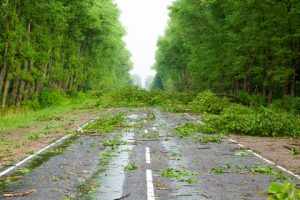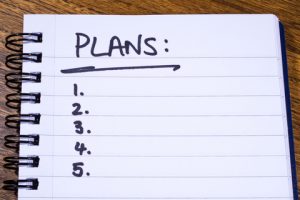In the aftermath of devastating hurricanes like Harvey and Irma or other natural disasters, it’s important to access the resources you need to return to normalcy and safety as soon as possible. These are key actions to take:
1. Contact your homeowner’s or renter’s insurance carrier
Review the coverage of your policy with your agent, and begin the process of filing your insurance claim. If your home is inhabitable,your homeowner’s policy’s “loss of use” clause covers the costs of temporary housing. Keep all receipts regarding related expenses.
Even if you don’t have flood insurance, your policy may cover water and wind damage.
As a homeowner with a mortgage, you are required to have comprehensive homeowner’s insurance which normally doesn’t cover flood damage. Even if you don’t have flood insurance, your policy may cover water and wind damage. Consider having a separate flood insurance policy in the future. The average annual cost is $700. The average annual cost of earthquake insurance is $100 to $300 outside of California, Oregon, Washington, and Alaska.
Hurricanes Harvey and Irma caused devastating flooding from storm surges and unprecedented amounts of rain and flash flooding. Approximately 40,000 homes were destroyed in Houston. The damage from Irma in Florida is still being tallied.
2. Call your mortgage company about payments
Your phone call is important because it sets in motion how your mortgage company will help you. Mortgage companies may differ in how they work with customers after a major disaster, so don’t assume you know.
In general, mortgage lenders will waive late fees and defer payments following a disaster for a few months.
FHA-backed loans usually provide a 90-day moratorium on foreclosures to give the homeowner more time to work with the lender and insurance carrier to assess the damage and understand the situation. If your home isn’t damaged but you lost your job due to the disaster, you may qualify for delayed mortgage payments.
In general, mortgage lenders will waive late fees and defer payments following a disaster for a few months. Then customers will have to pay a lump sum or arrange a payment plan.
3. Contact your auto/vehicle/boat insurance carrier
Report your vehicle claim as soon as possible. Insurance agents are already busy handling claims from Harvey’s damage. Write down your claim number and keep notes of every contact with your insurance agent, including the agent’s name. Make immediate arrangements for a rental car if your policy covers it.
Flooding in Houston from Hurricane Harvey destroyed about one-million cars, but it’s too soon to know the full impact in Florida and other areas hit hard by Hurricane Irma.
4. Write an inventory list of property and belongings
If you already have a list, double-check it to make sure it is up to date. You can create a detailed inventory list online using the Insurance Information Institute’s award-winning Know Your Plan mobile app. Many insurance companies also have their own inventory apps.
5. Apply for disaster assistance from FEMA.
If you have no insurance, you can apply for a range of state, federal, and voluntary disaster assistance programs from the Federal Emergency Management Agency. Call 800-621-FEMA(3362) or TTY 800-462-7585. Or register online at www.DisasterAssistance.gov or through the FEMA App. You can also contact nonprofit groups for assistance. Some companies also provide emergency aid to employees.
Be Prepared
The best protection against natural disasters is being fully prepared. If your plan fell short of protecting you from Harvey or Irma, take a close look at how you can prepare better for future disasters and emergencies.
A and N Mortgage Services Inc in Chicago, IL provides you with high-quality loan programs tailored to fit your unique situation with some of the most competitive rates in the nation. Whether you are a first-time homebuyer, relocating to a new job, or buying an investment property, our expert team will help you use your new mortgage as a smart financial tool.





